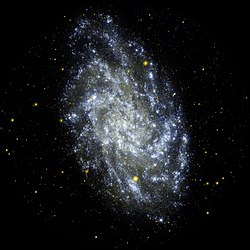Fred the Cat wrote: ↑Sat Oct 09, 2021 2:40 pm
Chris Peterson wrote: ↑Sat Oct 09, 2021 1:49 pm
Fred the Cat wrote: ↑Sat Oct 09, 2021 1:41 pm
The Milky Way galaxy
resides in an
area of relatively
nothing.

We investigate physics on Earth but, “Do we live in the best part of the universe to test theories?” Could physics even be
tested?
Dark energy theory's themselves could rest in the balance.

There are many, many measurements that we make of things in distant parts of the Universe, all of which offer powerful evidence that the rules of physics we observe here are the same everywhere.
I can only question things from a basic understanding of physics and an interest to know more. When you read lay info, written by physicists, that are questioning topics of the unknown variety, it stirs the curiosity and are fun to share. Like, " If gravitational waves flow along cosmic filaments or through voids or both? Maybe the
string section will chime in?

Interesting postulate.
Excluding regions of space within black-hole event horizons, a fundamental General Relativity principle is space-time is well defined
everywhere within the Universe, and gravitational radiation propagates in all directions throughout "all" of space-time. Therefore, since you are constraining gravitational radiation within filaments, you're question implies space-time only exists within cosmic filaments. That also means that normal photons only travel within cosmic filaments. However, the fact cosmic filaments (and the voids) are mapped through observation, i.e. both voids and filaments are visible by the presence of, and lack of matter, space-time necessarily must exist in both voids and filaments.
This reasoning seems to be the simplest approach to convince oneself that space-time does not have voids between cosmic filaments.
Does space-time have voids? For discussion sake, if there are, they would not be visible with the electromagnetic spectrum, and I believe not visible with gravitational radiation. However, If / when gravitational radiation observatories are evolved as far as our present EM radiation observatories, we may discover new things and new questions about our Universe and its evolution.
